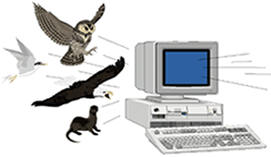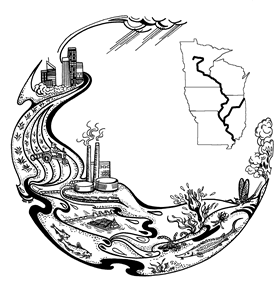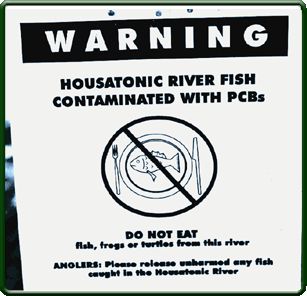- Home
- About S&T
- Taxa/Organisms
- Ecosystems
- Issues
- Methods & Tools
- Reports & Publications
- Location
- Search
Publisher: NBII | Format: URL
pollinators.nbii.gov — The global declines in many kinds of pollinator species could potentially impact the global food supply, as many plants depend upon specific pollinators to reproduce. The Web site of the NBII Pollinators Project provides access to information about the biology, ecology, conservation status, and threats to native pollinators, pollinator-dependent More...

Publisher: USGS | Science Center: Patuxent Wildlife Research Center (PWRC, Laurel) | Format: URL
www.pwrc.usgs.gov — Information about ecotoxicological exposure and its effects on terrestrial vertebrates residing in estuarine and coastal habitats like the Atlantic, Gulf and Pacific Coasts, Alaska and Hawaii, as well as the Great Lakes. These vertebrates include birds, mammals, amphibians and reptiles. The data is a compilation of results from computerized More...

Publisher: USGS | Science Center: Patuxent Wildlife Research Center (PWRC, Laurel) | Format: URL
www.pwrc.usgs.gov — BEST Large River Fish Health Data Query Tool provides a simplified portal for accessing database that serves fish health endpoints measured through the Biomonitoring of Environmental Status and Trends (BEST) Project's Large River Monitoring Network (LRMN). The tool allows the user to search the database by species, chemical, river basin, sampling More...

Publisher: USGS | Science Center: Forest and Rangeland Ecosystem Science Center (FRESC, Corvallis) | Format: URL
ris.wr.usgs.gov — The Raptor Information System (RIS) is a computerized literature retrieval system that focuses on raptor management, human impacts on raptors, the mitigation of adverse impacts, and basic raptor biology (with an emphasis on population dynamics and predation). The raptor contaminants database is a subset of RIS that includes references with More...

Publisher: USGS | Science Center: Upper Midwest Environmental Sciences Center (UMESC, LaCrosse) | Format: URL
www.umesc.usgs.gov — This web resource provides decision makers with the information needed to maintain the Upper Mississippi River System as a viable multiple-use large river ecosystem. This resource also includes Data and sampling information, publication links, reports, other related documents and statistics, as well as links to field stations and other projects More...

September 2008 | Publisher: USGS | Format: URL
pubs.usgs.gov — Water is among Florida's most valued resources. The State has more than 1,700 streams and rivers, 7,800 freshwater lakes, 700 springs, 11 million acres of wetlands, and underlying aquifers yielding quantities of freshwater necessary for both human and environmental needs (Fernald and Purdum, 1998). Although renewable, these water resources are More...

2008 | Publisher: USGS | Format: URL
pubs.usgs.gov — This study determined that concentrations of persistent hydrophobic contaminants, such as polycyclic aromatic hydrocarbons (< picograms per liter), legacy pesticides (<10 picograms per liter), and polychlorinated biphenyls (<280 picograms per liter) were low and indicative of a largely agricultural area. Atrazine and simazine were the most More...

2008 | Publisher: USGS | Science Center: Western Ecological Research Center (WERC, Sacramento) | Format: .PDF
www.werc.usgs.gov — Mercury is a contaminant of significant concern in waterbirds because it can accumulate to high concentrations in their tissues and cause deleterious effects such as impaired reproduction. Numerous studies and monitoring programs have evaluated concentrations of mercury in waterbird tissues as an index of risk to exposure. However, no single More...

2008 | Publisher: Other (RSC Publishing, Journal of Environmental Monitoring) | Format: URL
www.rsc.org — Environmental contaminant and biomarker monitoring data from major U.S. river basins were summarized for black bass (Micropterus spp.) and common carp (Cyprinus carpio) sampled over a nine year period. Cumulative frequency distributions revealed taxon differences for many organochlorine residue concentrations, elemental contaminant concentrations, More...

2006 | Publisher: USGS | Science Center: Upper Midwest Environmental Sciences Center (UMESC, LaCrosse) | Format: URL
www.umesc.usgs.gov — The Sediment-Contaminant Database for the Upper Mississippi River System (version 2) contains reliable sediment-contaminant data from a total of 3950 analyzed sediment samples collected from 1974 through 2000 from the Upper Mississippi River, the Illinois River, and selected tributary streams. Groups of contaminants represented in the database More...

2001 | Publisher: USGS | Science Center: Upper Midwest Environmental Sciences Center (UMESC, LaCrosse) | Format: URL
www.umesc.usgs.gov — Research at the Upper Midwest Environmental Center, which gathered detailed observations on tree swallow nesting success and contaminant concentrations in 1998-2000, to guide EPA and the U.S. Fish and Wildlife Service in effectively managing the risk of chemical contaminants to wildlife and the environment.

Publisher: USGS | Science Center: Western Fisheries Research Center (WFRC, Seattle) | Format: URL
wfrc.usgs.gov — Mercury contamination from historic gold mining operations is widespread in many rivers, lakes, and reservoirs on the western slopes of the Sierra Nevada. A multidisciplinary investigation by USGS is attempting to better understand mercury dynamics and to identify hot spots within Camp Far West Reservoir in order to determine if remediation More...
